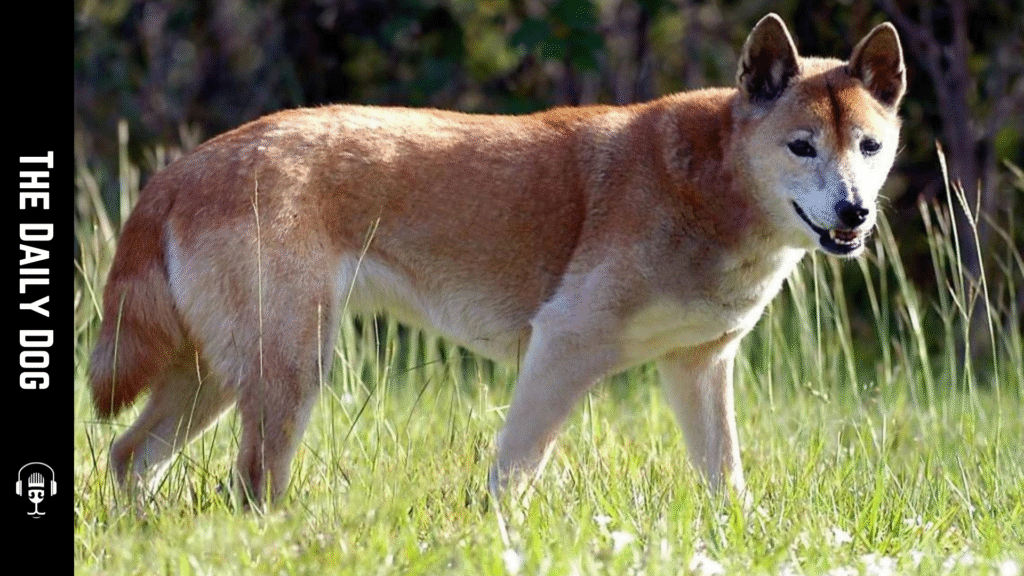When it comes to canine diversity, few breeds stand out as much as the New Guinea Singing Dog. With its striking appearance, extraordinary vocal abilities, and wild origins, this breed captivates dog enthusiasts and researchers alike. In this article, we explore the fascinating history, unique characteristics, care requirements, and the importance of conservation efforts surrounding the New Guinea Singing Dog.
Origins and History of the New Guinea Singing Dog
The New Guinea Singing Dog (NGSD) is one of the rarest and most intriguing dog breeds worldwide. Native to the rugged highlands and remote rainforests of New Guinea, these dogs have adapted to a challenging environment for thousands of years. Their ancestors are believed to have been domesticated or semi-domesticated by indigenous peoples long before European contact.
Historically, the NGSD was regarded as a hunting companion and protector within local communities. Their ability to traverse dense forests and rugged terrain, combined with their keen senses, made them invaluable. Interestingly, the breed earned its name due to its distinctive vocalizations, an eerie, melodic singing that can be heard echoing through the New Guinea wilderness. These vocalizations have fascinated researchers and dog lovers worldwide, leading to the breed’s reputation as the “singing dog.”
The breed’s wild nature meant that it remained largely isolated from mainstream canine populations. It was not until the mid-20th century that the NGSD gained international attention through scientific studies and limited captivity efforts. Today, the breed is critically endangered, with only a handful of individuals kept in zoos, research centers, and dedicated conservation programs.
Physical Characteristics and Appearance
The New Guinea Singing Dog boasts a striking appearance that blends wild and domestic features. Its body is lean and muscular, built for agility and endurance in challenging environments. Here are some key physical traits:
- Size: Typically, NGSDs are medium-sized, weighing between 20 to 30 pounds (9 to 14 kg) and standing about 16 to 20 inches (40 to 50 cm) at the shoulder.
- Coat: The coat is short, dense, and coarse, providing protection against the humid rainforest climate. Fur coloration usually varies from sandy or tan to reddish or grayish hues, often with darker markings.
- Ears: Large, pointed ears are a prominent feature, aiding in acute sound detection—vital for hunting and alertness.
- Tail: The tail is bushy and carried low, sometimes curling slightly at the tip.
- Facial Features: They have a fox-like appearance with a narrow snout, sharp eyes, and alert expression.
The breed’s wild origins are evident in its agility, alertness, and overall appearance. Despite their wild traits, NGSDs possess a certain elegance and striking beauty that appeals to dog lovers and breeders interested in unique and rare breeds.
Temperament and Behavior
The temperament of the New Guinea Singing Dog is a reflection of its wild heritage combined with domestication efforts. They are known for their intelligence, independence, and strong hunting instincts. Here are some behavioral traits:
- Vocalization: As their name suggests, singing dogs are renowned for their melodious howling and singing. These vocalizations serve communication purposes, helping them coordinate with pack members or warn of danger.
- Sociability: While they can be affectionate and form strong bonds with their human caretakers, NGSDs tend to be wary of strangers and may exhibit territorial behaviors.
- Intelligence: Highly intelligent, they require mental stimulation and problem-solving activities to remain engaged.
- Independence: They are more independent than typical domestic dogs and may prefer exploring or hunting over constant companionship.
- Training: Due to their wild instincts, training can be challenging. Positive reinforcement and patience are essential when working with this breed.
Because of their natural instincts, NGSDs thrive in environments where they can explore and exhibit their hunting behaviors. They are best suited for experienced dog owners who understand their wild traits and are committed to providing proper socialization and training.
Care and Maintenance
Caring for a New Guinea Singing Dog requires understanding their specific needs rooted in their wild background. Here are essential aspects of their care:
Housing and Environment
- Space: NGSDs need ample space to roam and explore. A secure, large yard or access to outdoor environments is ideal.
- Enrichment: Mental stimulation is crucial. Puzzle toys, scent games, and regular exploration help keep them engaged.
- Shelter: Provide a comfortable shelter that protects against weather extremes. They are adaptable but thrive in environments that mimic their natural habitat.
Diet and Nutrition
- Diet: A balanced diet high in protein is essential. They can be fed high-quality commercial dog food formulated for active breeds, supplemented with fresh meats and vegetables.
- Hydration: Always ensure access to clean, fresh water.
Exercise and Activity
- Daily Exercise: High activity levels demand daily walks, runs, and playtime.
- Hunting and Foraging: Incorporate activities that mimic their natural behaviors, such as scent trails or fetch games.
Grooming
- Coat Care: Their coat requires minimal grooming—regular brushing to remove loose hair suffices.
- Health Checks: Routine veterinary visits are necessary to monitor for common canine health issues.
Challenges and Considerations
Owning a New Guinea Singing Dog isn’t suitable for everyone. Their wild nature and specific care needs present certain challenges:
- Wild Instincts: They may exhibit prey drive and territorial behaviors, making socialization with other pets complex.
- Training Difficulties: Their intelligence and independence can complicate obedience training.
- Legal Restrictions: In some regions, owning NGSDs may be regulated or prohibited due to their wild heritage.
Potential owners should thoroughly research and evaluate their ability to meet the breed’s needs before bringing a NGSD home.
Conservation and Ethical Concerns
The New Guinea Singing Dog is critically endangered in the wild. Habitat destruction, hunting, and the introduction of domestic dogs have threatened their populations. Conservation efforts focus on:
- Captive Breeding: Maintaining genetic diversity and ensuring the survival of the breed.
- Research: Studying their behavior, genetics, and ecological role.
- Habitat Protection: Efforts to preserve their natural environment in New Guinea.
It’s essential to support ethical breeding programs and avoid buying domesticated NGSDs from unreliable sources, which can contribute to the breed’s decline and potential for illegal trade.
The Future of the New Guinea Singing Dog
While the future of the New Guinea Singing Dog remains uncertain, dedicated conservation initiatives offer hope. Awareness campaigns, responsible breeding, and habitat preservation are vital to ensuring this unique breed survives for generations to come.
For dog enthusiasts interested in rare, wild, and intelligent breeds, the NGSD presents a fascinating example of canine diversity. Their melodious singing, wild elegance, and rich heritage make them one of the most captivating breeds in the world.
The New Guinea Singing Dog embodies a rare blend of wild instinct, intelligence, and melodic vocalization. As one of the most endangered and unique breeds, they serve as a reminder of the importance of conservation and responsible pet ownership. Whether appreciated for their wild beauty or their extraordinary singing, NGSDs continue to fascinate and inspire those who seek to understand and protect our canine cousins.
If you’re considering welcoming a New Guinea Singing Dog into your home, remember that they require specialized care, patience, and a commitment to their well-being. By supporting conservation efforts and ethical breeding programs, you can play a part in preserving this remarkable breed for future generations.
We offer a FREE Strategy Call.
Click on the graphic to learn more
Read More


Prey versus Play: How to deal with your dogs natural prey drive








